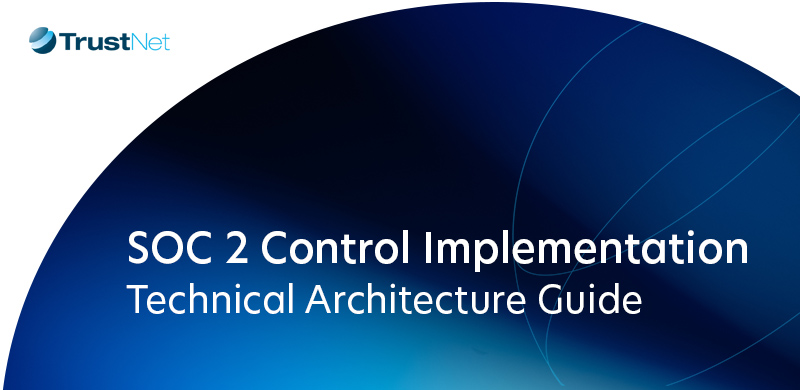Blog Boosting Sales with Low Risk, High Yield Clients: A Cyber Insurance Perspective
Boosting Sales with Low Risk, High Yield Clients: A Cyber Insurance Perspective

By focusing on clients with low exposure to cyber risks, cyber insurance companies can drive revenue (through earned premiums) while also minimizing losses (in the form of claims payouts).
In contrast, cyber insurers generally limit or outright decline coverage for high-risk applicants. These are companies with inadequate cyber security measures in place, making them more vulnerable to data breaches, phishing, ransomware, and other costly attacks. This increases their likelihood of submitting insurance claims, which dilutes the profitability of cyber insurers.
Given the growing frequency and severity of cyberattacks, insurers would likely continue restricting coverage for high-risk prospects and focus instead on low-risk clients with mature security controls in place.
The Role of Cyber Insurance in Risk Management
Cyber insurance is a financial service designed to provide monetary assistance to covered entities that suffered cyberattack damage in exchange for a recurring fee called a premium. Cyber insurance helps organizations mitigate the risk of unexpected losses or costs following an attack on its network or digital assets.
Amid the world’s growing dependence on IT infrastructures, the cyber insurance market will grow rapidly over the next few years as more organizations get exposed to internet-based attacks. Corporate insurance forms the bulk of this market.
With cyberattacks capable of dealing significant monetary, operational, and reputational damage, studies agree that these cyber threats rank among the most serious risks to businesses around the world. As a result, cyber insurance now serves as an important component in risk management, offering financial protection and professional assistance to mitigate the impact of major security incidents.
The over-reliance of businesses on traditional and reactive approaches to cybersecurity makes matters more challenging for both organizations and cyber insurers. These legacy solutions do not prove adequate against sophisticated cyber threats, highlighting the need for more proactive strategies. Integral to these strategies are advanced cybersecurity services that can enhance organizational resilience.
These services include preemptive threat detection, multifactor authentication (MFA), data backup and recovery, endpoint detection and response (EDR), and continuous monitoring. To mitigate their own risks, many cyber insurers now require corporate applicants to have such measures in place before agreeing to provide insurance coverage.
Identifying Low Risk, High Yield Clients
By focusing on low-risk/high-yield clients, cyber insurers can drive profitability by improving their revenue performance while also minimizing their loss ratio.
Loss ratio is the proportion of paid insurance claims to earned premiums. Because low-risk clients have better cyber awareness and protection, they have a lower likelihood of suffering major cyberattacks and are less likely to file an insurance claim. As a rule of thumb, cyber insurers make more money when their earned premiums are larger than their claims payouts.
In contrast, cyber insurance companies rarely accept high-risk applicants. High-risk companies have poor or inadequate cyber security measures in place, making them more vulnerable to data breaches, phishing, ransomware, and other costly attacks. They are also more likely to submit insurance claims, which dilutes the profitability of cyber insurers.
This is why cyber insurers severely restrict coverage for high-risk entities. The restriction can be in the form of very steep security requirements, extremely high premiums, or outright rejection.
The policy is understandable and learned the hard way. Due to the frequency, complexity, and severity of data breaches in the last few years, some cyber insurers still reel from the financial impact of paying out higher total insurance claims than what they have earned through customer premiums. In 2020 for example, the average loss ratio of French cyber insurance companies clocked in at more than 160 percent.
Benefits of Low Risk, High Yield Clients
Low-risk, high-yield clients are organizations with high customer lifetime values and a low likelihood of experiencing data breaches.
For cyber insurers, engaging this type of clients delivers many advantages including:
- Increased Revenue — targeting clients with a low probability of filing a claim but a high potential for revenue can help insurance companies drive sales performance and improve profitability.
- Reduced Risk — focusing on low-risk clients can help organizations minimize their own exposure to cyber threats and reduce the likelihood of financial, reputational, and legal damage.
- Improved Risk Management — adopting a proactive and adaptive approach to cybersecurity can help organizations stay ahead of emerging threats and mitigate their own and their clients’ exposure.
Key Components of Cyber Insurance
Cyber insurance has many linked components but most center on the astute balancing of potential risk and reward. The key elements of cyber insurance include:
- Coverage — the extent of protection that a cyber insurance policy provides against various cyber risks, such as data breaches, business disruption, and ransomware.
- Risk Assessment —the process of evaluating a company’s IT infrastructure, systems, and data to identify the security gaps and vulnerabilities.
- Risk Mitigation — the process of implementing measures to reduce the likelihood and severity of cyberattacks.
- Monitoring and Reporting — the process of continuously tracking and evaluating the performance and effectiveness of the risk mitigation measures, as well as reporting on the company’s security posture and regulatory compliance.
Challenges and Considerations
Focusing on low-risk, high-yield clients certainly has its share of challenges.
Business engagement with mature enterprises may require higher resource requirements compared to doing business with low-yield companies. Intense competition with other service providers trying to engage the same high-value client entails significant cost to hurdle. Many large organizations with robust security measures have also been targeted by cybercriminals for the perceived high returns in breaching their systems. In the rare event of a successful breach, insurance claims can lead to massive payouts.
Because most companies with advanced security practices tend to have a great deal of IP assets and customers, the handling of sensitive data becomes challenging as well. Compliance with applicable data privacy and protection standards such as those set by GDPR, CCPA, HIPAA, and PCI DSS must be strictly maintained.
Finally, adapting to a highly selective sales approach may require a shift in organizational culture, especially among revenue-centric teams. Companies might need to move away from traditional sales models to successfully serve this highly demanding client demographic.
Final Takeaways
Cyber insurance serves as a vital safety net for today’s digital businesses. It is a powerful resource for managing risks and for cushioning organizations against the potential impact of cyberattacks. Like cyber risk ratings, cyber insurance is a proactive measure companies can implement to reduce their risk exposure and improve resilience.
As the insurance model proves, having a high cyber risk rating score not only demonstrates a strong security posture but also affects a company’s growth potential and profitability. A company with a strong risk management culture is better positioned for success. That’s because such a company will be the preferred partner, vendor, customer, loan applicant, insurance policy holder, investment/acquisition target, or service provider of other organizations that seek high yield value from the engagement. In contrast, few companies would willingly accept third-party risks that they could not reasonably mitigate.
Knowing your company’s cyber risk rating is the first step to improving your security posture to bolster revenue performance. Developed by TrustNet, the iTrust Cyber Risk Ratings Platform enables 360° visibility into your cybersecurity and compliance risks. With advanced capabilities such as continuous monitoring and assessment, automated compliance tracking, hacker threat analysis, and breach monitoring, the iTrust risk rating platform can be your launchpad to thrive in the digital economy.




